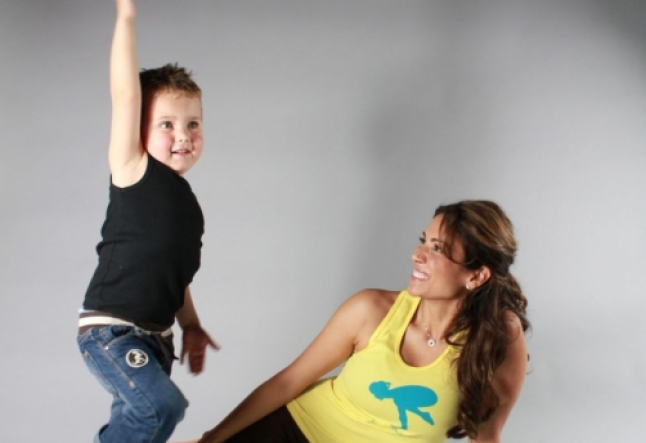enjoying yoga with your child

pint sized guru
Yoga originated over 5,000 years ago in India, and the names of the poses tell the story of the animals and shapes that were present in the environment of the first Yogis. Poses like Downward Facing Dog and Cow Face pose, reflect the Yogis innate ability to draw inspiration from the natural world and surrounding environment. As the mother of a soon to be 5 year old boy named Cruz, I am inspired by my son’s ability to do the same. Cruz has created his own asana names and shapes, and I love to practice Yoga with him!
As a child I grew up with Kriya Yoga. I was taught meditation and pranayama as a little girl, and received my first mantra at 6 years old. I am thankful for this gift, and I have been so happy to share some of these tools with my son. However, I am quickly learning who is the teacher, and who is the student. My son loves to play ‘Yoga teacher,’ which makes my heart sing. He often shows me variations that he has created, like’ flamingo pose.’ Flamingo pose is just like tree pose, but with the hip in neutral instead of external rotation. It is completely logical, and looks just like a flamingo.
I have learned to step back from the role of teacher with him when we practice Yoga, and I am his student. We giggle a lot, and make funny faces during asana practice in order to express the nature of various animal shapes. When we conclude our practice, my son likes for us to chant Om and dedicate it to the earth. I asked him why we chanted ‘Om’ for the earth, and he said, “for Mother Nature.” Again, his reasoning is completely logical and inspiring.
As a professional Yoga teacher, I have found that my teaching has evolved in a new way because of the influence of my pint sized guru. Under his tutelage I have become more playful, with a greater connection to the present moment. With kids, the past is gone and the future sounds too far off to be any fun. Full creative expression in each moment is a wonderful yogic lesson for us all.
Read next >> how to establish a steady home practice